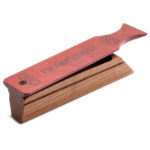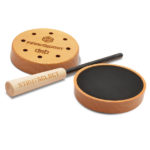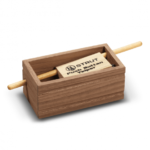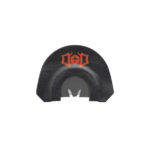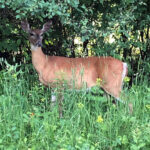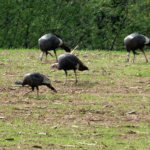Every spring, a new batch of hunters head to the woods to give spring turkey hunting a try. And while turkey hunting can be addicting for some, others may find it frustrating, and their efforts futile. Turkey hunting success varies by region and is largely dependent on the ground you have access to roam.
But don’t underestimate the power of good turkey calling skills. Sure, you can kill a turkey without calling. But for long-term success, turkey calling skills are something every hunter should make an effort to acquire. Below is a look at 3 must-know turkey calls to help you get started this spring.
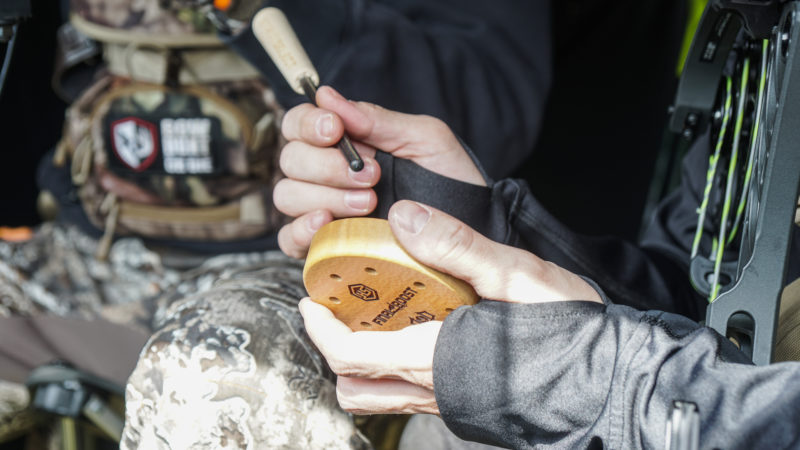
The Yelp
The yelp of the turkey is the bread and butter sound every hunter should know. There are plenty of other sounds in the wild turkey vocabulary, but none as commonly used as the yelp. Learn how to yelp on a call, and you’ll kill turkeys the rest of your life.
If you only master one sound, it’s the sound to have. Hens (and young gobblers) use the yelping sound to say “Hello,” “Where are you?,” “Come over here,” “I’m lonely,” “I’m mad,” and so much more.
Check out the yelp of the turkey, made on the HS Strut slate call, in the video below.
The Purr
The purr is a soft, subtle sound turkeys make as they move through the woods, scratching in the leaves, and feeding. It’s a contented sound that helps set the mood and puts a gobbler at ease.
You’ll often hear this sound mixed with the cluck. Clucks and purrs are common sounds of the wild turkey in their element as they move about the woods or fields throughout the day. While yelping and gobbling sounds may peak early in the morning from the roost, and shortly after flydown, the purr can be heard throughout the day as the flock moves about.
Listen to the purr sound made on a slate call in the video above.
The Cutt
The cutting sound of a spring hen is an excited sound in the turkey woods. This is the sound of a hen that’s cranked up, whether mad, or looking for love. It’s a great sound to use to get a gobbler to respond. But keep in mind, you can overdo it with the cutting sound.
The natural move is for a hen to go to the gobbler when he gobbles. Too much of the cutting call will often cause a gobbler to hold his ground and wait on the “excited hen” that he hears. A gobbler may respond to your excited cutting sounds, but he may not budge. Playing hard to get is typically a better tactic for making him move in your direction.
Check out the yelping and cutting sounds of a hen turkey on a box call in the video below with Mark Drury.
Great Turkey Calls for Beginners
The 3 easiest calls to learn the basics on would include the box call, pot call, and push/pull call. These three calls are easy to learn, and you’ll quickly be making the sounds of the wild turkey shortly after pulling one of these calls from the store shelf. These calls come under the category of friction calls. The downside of these calls is that they don’t perform well, if at all, when wet. However when properly maintained, they’ll sound as real as any turkey in the woods.
The mouth call is the toughest to learn, but will be one you’ll eventually want to add to your arsenal. It allows for hands-free calling as you prepare your bow or gun for the shot. Because the call actually goes in your mouth, rain or moisture is not a factor like what you’ll find with the friction calls mentioned above. When you’re ready to take your turkey calling game to the next level, the mouth call is the one to know.
The Pot Call – Often referred to as a slate call, the pot call comes in variety of surfaces these days, from slate, to glass, aluminum and more. As seen in the video above, you simply scratch on these pots with a wooden striker to make the sound you’re looking for. This style of call takes a little more practice than the box call or push/pull call, but it’s the perfect option for soft, subtle turkey sounds.

The Box Call – As the name implies, the box call resembles a small handheld box with a lid. You simply drag the lid across the box to produce the desired sound. Mark Drury demonstrates the process in the video above. The box call is one of the most realistic calls on the store shelf. It easily produces the raspy, choppy sounds of a hen or jake yelping.
It’s a great locater call to make a gobbler sound off at greater distances, or to coax a bird within range on windy days. However, some box calls can be difficult to use as a finish call when you need to reduce your volume. Quality turkey sounds can be difficult to produce with minimal volume.
The Push/Pull Call – The push/pull style call could best be described as the ultimate beginner call. As the name suggests, you simply push or pull the pin built into this call to produce the sound of a turkey. It may not sound as natural as the box or pot call, but it’s more than enough to draw a bird in close for the shot.
When it comes to calling turkeys, some of the best advice may be to keep it simple in your calling approach. Less can often be more in your turkey calling efforts. Learn the basic sounds mentioned above, and you’ll be well on your way to punching your turkey tag this spring.
What about you? What are the easiest, or toughest, calls you’ve tried to master so far?
Comment below, and let us know what you think.

 By
By 